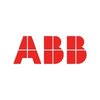

Integra Micro Systems



Integra Micro Systems Interview Questions and Answers
Q1. oops concepts from what is class to multi threading
Object-oriented programming concepts from class to multi-threading in Android development.
Class: blueprint for creating objects, encapsulates data and behavior (methods)
Inheritance: allows a class to inherit properties and methods from another class
Polymorphism: ability for objects to take on multiple forms
Abstraction: hiding implementation details and showing only necessary features
Encapsulation: bundling data and methods that operate on the data into a single unit
Interfaces...read more

Q2. What do you mean data query language and data definition language?
Data query language is used to retrieve data from a database, while data definition language is used to define and modify the structure of a database.
Data query language (DQL) is used to retrieve data from a database, such as SQL SELECT statement.
Data definition language (DDL) is used to define and modify the structure of a database, such as SQL CREATE TABLE statement.
DQL focuses on querying and retrieving data, while DDL focuses on defining and modifying the database schema....read more

Q3. Array list implementation
Array list implementation involves creating a dynamic list that can grow or shrink in size.
Use ArrayList class in Java to create an array list of strings.
ArrayList
list = new ArrayList<>(); Add elements to the list using list.add() method.
list.add("Apple");
Access elements using list.get() method.
String fruit = list.get(0);
Remove elements using list.remove() method.
list.remove(0);

Q4. Explain Android intent
Android intent is a messaging object used to request an action from another app component.
Android intent is used to start an activity, service, or broadcast receiver in Android app development.
It can also be used to pass data between activities or communicate with other apps.
There are two types of intents: explicit intents (targeting a specific component) and implicit intents (requesting an action from any app component that can handle it).

Q5. Difference between SDLC and stlc
SDLC is the Software Development Life Cycle, while STLC is the Software Testing Life Cycle.
SDLC focuses on the development of software from planning to deployment, while STLC focuses on the testing activities within the SDLC.
SDLC includes phases like requirements gathering, design, coding, testing, and deployment, while STLC includes phases like test planning, test design, test execution, and test closure.
SDLC is more comprehensive and covers the entire software development p...read more

Q6. What is your knowledge on system use
I have extensive knowledge on system use.
Proficient in using various operating systems such as Windows, Mac OS, and Linux
Familiar with different software applications such as Microsoft Office Suite, Adobe Creative Suite, and Google Suite
Experience in troubleshooting technical issues and providing solutions
Knowledgeable in network systems and security protocols
Ability to adapt to new systems and software quickly





Top HR Questions asked in Integra Micro Systems
Interview Process at Integra Micro Systems

Top Interview Questions from Similar Companies









Reviews
Interviews
Salaries
Users/Month












